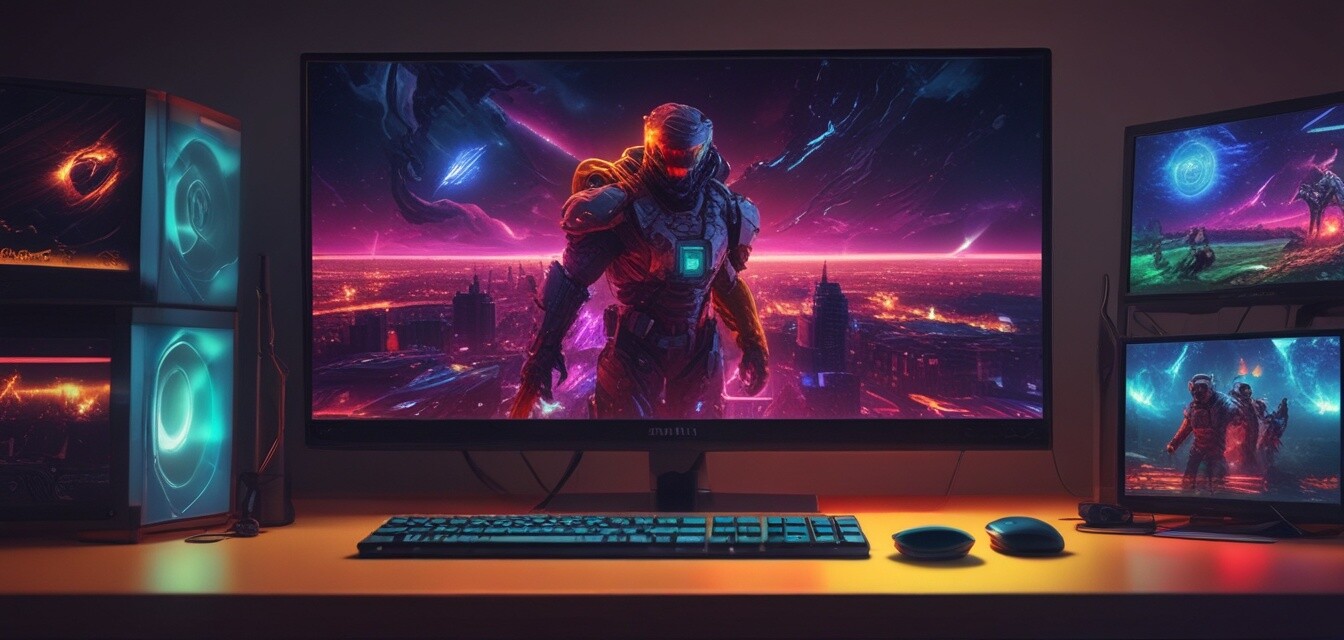
How to Connect Your OLED Monitor to Multiple Devices
Key Takeaways
- Understanding the available ports on your OLED monitor is crucial for connection.
- Using HDMI 2.1 can provide better performance for gaming consoles and PCs.
- Adjusting display settings on each device ensures optimal visual quality.
- Consider using a KVM switch for seamless transitions between devices.
- Regular firmware updates can improve compatibility and performance.
Connecting your OLED gaming monitor to multiple devices can enhance your gaming experience significantly. Whether you're switching between your gaming console, gaming PC, or streaming device, understanding how to connect these platforms without sacrificing performance is key. In this guide, we will cover everything from available ports to the best practices for maintaining high visual quality.
What to consider before connecting multiple devices
Before you begin connecting devices, there are several important factors to consider:
- Available Ports: Check the types and number of ports available on your OLED monitor.
- Device Compatibility: Ensure that your devices are compatible with the monitor’s input specifications.
- Cable Quality: Use high-quality cables (like HDMI) that can support the required resolution and refresh rate.
- Performance Needs: Depending on your usage, prioritize specific features like low input lag or high refresh rates.
Understanding Input Ports on Your OLED Monitor
Let's take a closer look at the input ports you might find on your OLED monitor:
| Port Type | Description | Best Use |
|---|---|---|
| HDMI 2.1 | Supports high resolutions like 4K at 120Hz and variable refresh rates. | Ideal for next-gen consoles and high-end gaming PCs. |
| HDMI 2.0 | Supports 4K at 60Hz, popular for most gaming needs. | Good for older consoles and general gaming. |
| DisplayPort 1.4 | Supports high refresh rates at 1440p and 4K resolutions. | Best for PC gaming with high-end graphics cards. |
| USB-C | Allows connection to laptops and mobile devices, can also transmit video. | Useful for modern laptops that support video output via USB-C. |
How to securely connect multiple devices
Once you understand the available ports, here are the steps you need to follow to connect multiple devices effectively:
- Identify the ports on your OLED monitor and prepare the corresponding cables.
- Connect each device to the monitor using its respective cable. Make sure that connections are firm and secure.
- Switch the input on your OLED monitor to select the appropriate device. This typically involves using the remote control or monitor settings menu.
- Adjust the settings for each device to ensure optimal performance. For example, set your gaming console to output in 4K if your monitor supports it.
Using KVM switches for seamless transitions
If you frequently switch between multiple devices, using a KVM (Keyboard, Video, Mouse) switch may be beneficial. This device allows you to control multiple computers from a single keyboard, monitor, and mouse setup. Here are some tips:
- Look for a KVM switch that supports HDMI 2.1 or DisplayPort 1.4 for high resolutions.
- Make sure the switch has enough ports to accommodate all your devices.
- Check for additional features, such as USB ports for peripheral devices.
Troubleshooting common connection issues
Even with the best equipment, you may encounter issues when setting up your OLED monitor. Here are some common troubleshooting tips:
Tips
- If the monitor does not detect your devices, try using a different HDMI or DisplayPort cable.
- For wireless connections, ensure that both the monitor and the device are on the same Wi-Fi network.
- Sometimes, rebooting your devices can resolve connectivity issues quickly.
- Ensure that your monitor's firmware is up-to-date for the best compatibility with new devices.
Conclusion
Connecting your OLED monitor to multiple devices can seem daunting, but with the right knowledge and equipment, it can be seamless. Always consider your monitor's specifications, ensure all devices are compatible, and prioritize high-quality connections to enjoy an immersive gaming experience.
Explore More
For additional insights into selecting the perfect OLED monitor, check out our best guides: